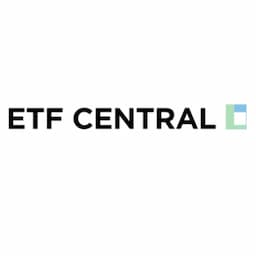The geopolitical landscape in the Middle East has been significantly impacted by the October 7, 2023, attack by Hamas on Israel, setting off a series of retaliatory actions that continue to unfold.
Most recently, the tension escalated after an Israeli airstrike in early April targeted Iran's consulate in Damascus, Syria, resulting in the death of a senior commander of the Iranian Revolutionary Guards Corps Quds Force. Iran's subsequent missile and drone attack on Israel on April 13, and Israel's airstrikes on Iranian territory further inflamed the situation.
Though both nations have publicly committed to preventing further escalation, the situation remains volatile, with ongoing Israeli military activities in Gaza and heightened tensions along its borders with Lebanon and Egypt.
These developments have had a mixed impact on global financial markets. Risk assets like Bitcoin saw a sharp decline in the wake of Iran's attacks, reflecting the immediate investor panic.
Conversely, certain other assets have historically tended to perform well during such times of tension. Here's an overview of the two main types of ETFs outside of the aerospace & defense industry that are most likely to be influenced by these ongoing geopolitical tensions.
Gold ETFs
Gold has long been seen as a flight-to-safety asset during times of war and geopolitical risk. However, this phenomenon is less about the conflict itself and more about the heightened uncertainty that such situations engender. Gold's appeal during these times can be attributed to several factors.
Unlike paper currency, gold is a physical asset with a finite supply. It cannot be debased by governments, making it a stable store of value. Furthermore, gold is stockpiled by central banks around the world, which underscores its role as a foundational asset in the global financial system.
As of April 29, the price of gold has risen over 13% year-to-date, significantly outperforming the S&P 500. This increase reflects gold's enduring status as a safe haven amid market volatility, which in addition to its low correlation to equities and fixed income makes it a popular option for diversification.
Investors looking to add gold to their portfolios have several options in the form of physical gold-backed ETFs, which are technically structured as grantor trusts.
Among these, the SPDR Gold Shares (NYSE:GLD) GLD-0.45% and the iShares Gold Trust IAU-0.43% are prominent choices, offering robust gold exposure. For those seeking more cost-effective alternatives, the SPDR Gold MiniShares GLDM-0.44% and the iShares Gold Trust Micro IAUM-0.46% provide similar benefits at a lower cost.
Energy ETFs
Energy sector investments often see heightened performance during times of war and geopolitical tension. This trend can largely be attributed to the critical role energy resources play in global economies and their limited supply.
Simply put, wars and conflicts can disrupt supply lines and increase fears of scarcity, which typically drives up prices and, consequently, the value of energy-related investments.
Most energy ETFs are affected because they cannot hold physical barrels of crude oil or natural gas like gold ETFs hold bullion. Instead, they must use derivatives such as futures contracts to gain exposure to these commodities.
Well-known examples include the United States Oil Fund (NYSE:USO) USO+0.82% and the United States Natural Gas Fund UNG+3.07%, which primarily hold crude oil and natural gas futures, respectively. Broader ETFs like the Invesco DB Energy Fund ETF DBE+0.6% hold a diversified portfolio of different energy derivatives.
However, investing in these ETFs comes with notable downsides. One significant issue is contango, where the futures price is higher than the expected future spot price at the contract maturity, leading these ETFs to lose money when they roll contracts in such an environment.
Additionally, many energy ETFs issue a Schedule K-1 tax form, which can complicate tax filings for investors. As an alternative, K-1 free options like the ProShares K-1 Free Crude Oil Strategy ETF OILK+0.75% are available.
For investors looking to capitalize directly on changes in energy prices, ETFs focusing on energy producers, particularly those in exploration and production (E&P), may be more appealing. This segment of the market is highly sensitive to oil price fluctuations.
While midstream companies like pipelines have fixed contractual incomes, and integrated energy giants benefit from diversified operations, E&P companies are directly impacted by the volatility of oil prices.
Investors have options such as the Invesco Dynamic Energy Exploration & Production ETF PXE-0.36%, a smart-beta fund; the iShares U.S. Oil & Gas Exploration & Production ETF IEO-0.14% , which is market-cap weighted; and the SPDR S&P Oil & Gas Exploration & Production ETF XOP+0.07%, which is equal-weighted.
This content was originally published by our partners at ETF Central.
